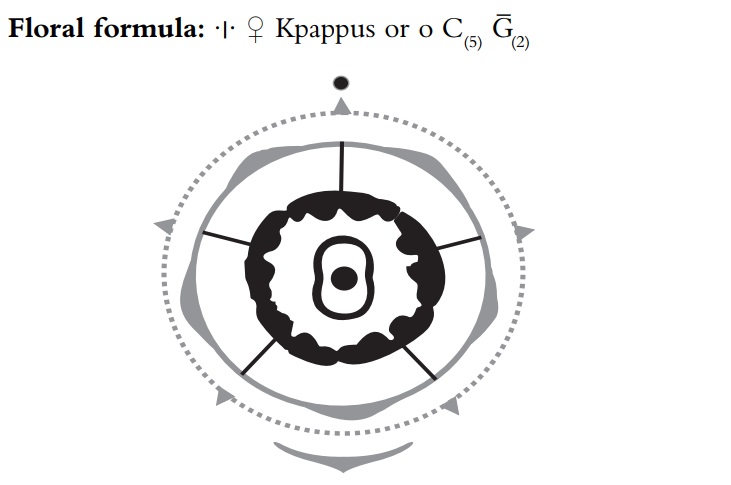Compositae
| Home | | Pharmacognosy |Chapter: Pharmacognosy and Phytochemistry : Study of Different Families
A British systematic botanist J. Hutchinson published his work, The Families of Flowering Plants in 1926 on dicotyle-dons and in 1934 on monocotyledons. Hutchinson made it clear that the plants with sepals and petals are more primitive than the plants without petals and sepals on the assumption that free parts are more primitive than fused ones.
COMPOSITAE
Habit: These are herbs and shrubs, rarely twiners, e.g. Mikarnia scandens, or trees, e.g. Vernonia arborea. They sometimes have internal phloem. Some
genera have latex, e.g. Sonchus, Crvpis,
Lactuca, Picris, etc.
Leaves: The leaves are simple, alternate or opposite, rarely
compound.
Inflorescence: The inflorescence is a head (or capitulum),
with an involucre of bracts.
Flowers (florets): The flowers are of two kinds—the central
ones (called disc florets) are tubular, and the marginal ones (called ray
florets) are ligulate. Sometimes all florets are of one kind, either tubular or
ligulate. The disc flowers are regular, tubular, bisexual and epigynous, each
usually in the axil of a bracteole.
Calyx: The calyx is often modified into a cluster of hairs
called pappus, as in Tridax and Ageratum, or into scales, as in
sunflower and Eclipta, or absent, as
in water cress (Enhydra).
Corolla: There are (5) petals. It is gamopetalous and
tubular.
Androecium: The five stamens are epipetalous. The fila-ments
are free but the anthers united (syngenesious).
Gynoecium: The carpels are (2), syncarpous. The ovary
inferior, one-celled with one basal, anatropous ovule. There is one style and
the stigma is bifid.
Fruit: The fruit is a cypscla.
Floral formula: ♀ Kpappus
The ray florets are zygomorphic, ligulate, unisexual
(female), or sometimes neuter, as in sunflower, and epigynous, each usually in
the axil of a bracteole. The calyx is usually modified into pappus. Sometimes
it is scaly or absent. The corolla has (5) petals, is gamopeta-lous and
ligulate (strap shaped). The gynoecium has disc florets shape.

Examples: Sunflower, pyrethrum, artemisia, etc.
